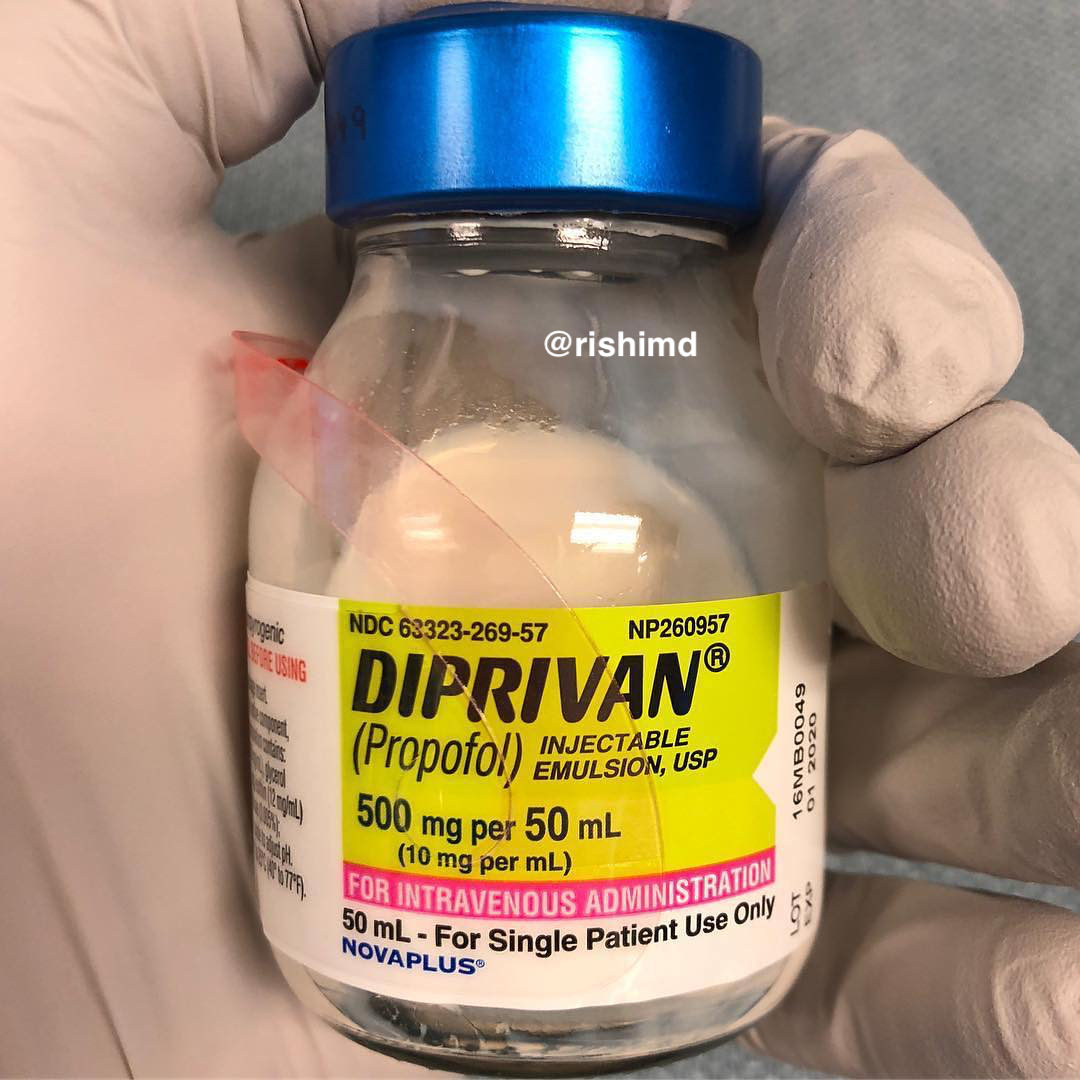Propofol (Diprivan) is perhaps the most well known intravenous hypnotic used in perioperative and intensive care medicine. This “milk of amnesia” is prepared in a lecithin-based (purified egg yolk) emulsion. Similar to many other IV anesthetics, propofol potenPropofol (Diprivan) is perhaps the most well-known intravenous hypnotic used in perioperative and intensive care medicine. This “milk of amnesia” is prepared in a lecithin-based (purified egg yolk) emulsion. Like many other IV anesthetics, propofol potentiates GABA, one of the primary inhibitory neurotransmitters in the central nervous system, to hyperpolarize post-synaptic neurons. Its perfusion-dependent hepatic metabolism and good context-sensitive half-time make propofol infusions an excellent option in many contexts.
As a CVICU intensivist, I most commonly use propofol combined with agents like fentanyl and dexmedetomidine to provide sedation for patients on mechanical ventilation. As a cardiothoracic anesthesiologist, propofol is the staple for nearly all of my general anesthetic inductions, the backbone of my total intravenous anesthesia cases, a great option for monitored anesthesia care cases (plain propofol, remi-fol, keto-fol), a rescue antiemetic in the PACU, an anticonvulsant, a form of neuroprotection (e.g., before deep hypothermic circulatory arrest), a way to deepen an anesthetic before intense stimuli (e.g., Mayfield skull pins), and in my opinion, a very “predictable” medication.
Although it’s a myocardial depressant, decreases afterload, and can create myoclonic movements, propofol’s most concerning side effect is propofol infusion syndrome (PRIS). This rare presentation is characterized by muscle breakdown, metabolic acidosis, kidney failure, high triglycerides, and heart failure. It’s seen more often with high dose, long-duration infusions.
Because of its lipid emulsion, propofol has 1.1 kcal/cc, leading to overfeeding when coupled with enteral feeds! Also, propofol’s phenolic metabolites can present as green urine!
Drop me a comment below with questions! 🙂







I think I have heard you mention mixing propofol and epinephrine for induction on patients who may not be able to tolerate propofols’ myocardial depressant effects.
Can you speak more to this strategy? What patients would you consider this on ? What dosing do you use
With the patient population I care for (heart failure, pulmonary hypertension, etc.), I routinely use push dose pressors/inotropes during induction to offset the vasodilatory and myocardial depressant effects of propofol. I avoid answering dosing questions because there’s so much to consider (concurrent therapies, patient size/age, exaggerated response to vasoactive substances, other comorbidities, etc.), but tend to use anywhere from 5 to 20 mcg of norepinephrine and/or epinephrine, sometimes some calcium chloride, sometimes a unit or two of vasopressin. As the saying goes, you can always give more, but you can’t take it back.